Knee injuries can be caused by damage to muscles, ligaments, nerves, bones or joints. Below are links to articles explaining the different types of structures in your knees and the injuries related to them. We’ve also included tips on how to tend to your injury at home!
Most injuries don’t happen in isolation. In most cases, we find 2 to 3 structures at the root of a problem. It’s also common to find more than one injury. To illustrate an example: With a twisted knee we typically find 2 sprained ligaments, 3 muscle injuries, as well as 2 tendon injuries.
When diagnosing patient problems, we determine the main area which has been damaged and focus our treatment on that. The general progression of problems stems from these underlying structures (generally in this order): 1) Nerves 2) Bones 3) Joints 4) Meniscus 5) Ligaments 6) Tendons 7) Muscles
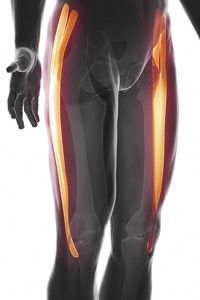
Overuse of this ITB tendon can cause iliotibial band syndrome. The iliotibial band becomes painful at the outside of the thigh and knee, due to friction. ITB Syndrome due to bio-mechanical abnormalities
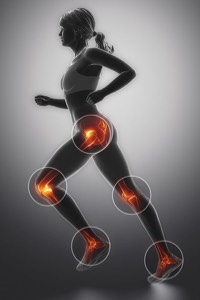
Runner’s knee can be frustrating and painful, but we give you the causes to prevent it, and lots of treatment options to help get you back running quickly. Runners knee pain symptoms and treatment.
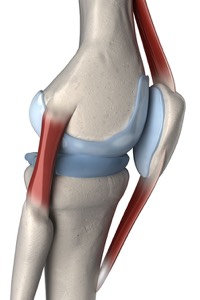
Knee ligament injuries are serious, Ligaments are made of very thick connective tissue that provides stability to the joints.
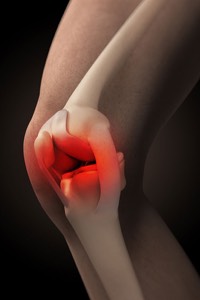
The ACL is the strongest and most important ligament in your knee, yet tears of this ligament are quite common.
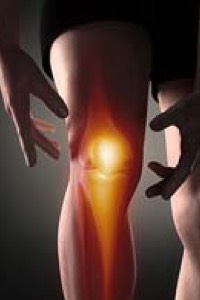
Knee Tendinitis (also called knee tendonitis or knee Tendinopathy) is an inflammation or irritation of a tendon. Difference between types of knee tendon injuries including infra-patella tendinitis & supra-patella tendinitis.
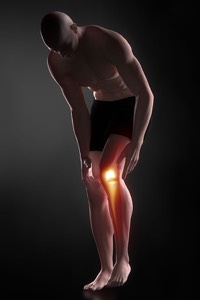
Knee pain can be one of many signs of injury to structures like ligaments, muscle, tendons that cause severe pain.
Get the help you really need
Medical professionals that care about you

Medial Collateral Ligament injury is injury to the ligament on the inside of the knee due to twisting of the knee inwards.
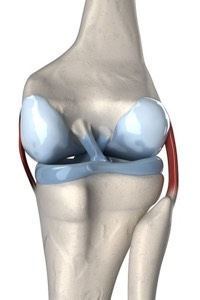
Meniscus tear: These tears are caused by the two bones hooking on a part of the cartilage, then shearing it off its normal position. Here’s some Physio advice
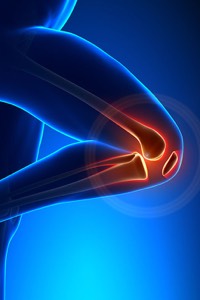
Osteoarthritis of the knee joint is classified into 4 stages, Knee pain from arthritic changes can cause sever pain in the knee joint. Treatment include Physiotherapist’s rehabilitation program and other medical treatment
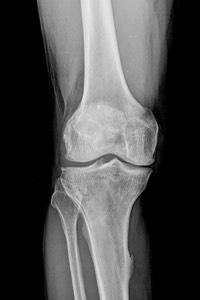
Total Knee Replacement needs constant monitoring and treatment by a physiotherapist, See what to expect from your knee, goals and progress to full recovery.
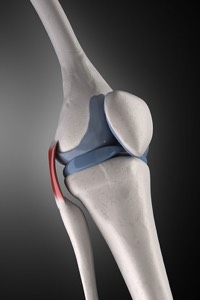
A Lateral Collateral ligament injury is tearing of the ligament on the outside of your knee.
Get to the root cause of your problem
Our team of experts guide you to heal
Knee conditions & structures in your knee
With or without trauma to the knee some pains may be worse than others if the pain comes from inside the knee joint where the bones connect.
Injury to structures like ligaments, muscle, tendons can cause severe knee pain. Know the different types and causes is the first step to healing a knee injury. Knee pain are mostly as a result of direct injury to the knee, when twisting, falling, pivoting and a turning motion. Structures like ligaments, tendons, muscles, menisci and cartilage provide stability to the knee joint, and when these are injured, the knee is unable to support the weight of your body and puts a lot of strain on these structures.
Many people tend to wait for it to heal by itself. You must realize that you are walking on a wound, the wound will never heal if you continue to walk on it (pull and crush the wound). This is the most common mistake we see with knee injuries.
Ligaments
Ligament Sprain (torn ligaments). The knee connects the thigh bone (femur) to the shin bone (tibia), and the only things holding these two large bones together are four ligaments. Ligaments are strong but not very flexible. If these are stretched beyond its boundaries, one or more of the ligaments tear. The sprains can range minor tears to complete ruptures, in which the ligament tears away from the bone and snaps (often with an ominous popping sound).
Muscle
Overload and overuse injuries are more common. Overuse injuries are repetitive or constant pull on the muscles and tendons, they start to tear on a very small scale. It’s like a hand full of spaghetti stings, one by one they break and try to repair themselves but if you keep on pulling on them they never heal properly. The fibers become thick and swollen which puts more pressure on the surrounding fibers. Then more fibers will tear. Every time you move this process happens, it needs to be stopped. The quadriceps muscle runs over the front of the knee and the Hamstrings, Gastrocnemius, Soleus and Popliteus runs over the back of the knee.
- Vastus Medialis muscle – Inside and on the top of the kneecap
- Vastus Lateralis muscle – Outside and on the top of the kneecap
- Rectus femoris muscle – Straight above kneecap
- Vastus Indermediaus muscle – Deep and underneath the Recutus femoris muscle, above the kneecap
- Bicep femoris muscle – the outside of the knee at the back
- Semitendinosus muscle – on the inside of the knee
- Semimembranosus muscle – on the inside of the knee
- Medial and Lateral head of the Gastrocnemius muscles – at the back in the fold of the knee
Joints
Swelling around the knee cap and pain deep within the knee must be investigated to determine if the structures inside the knee are affected and how badly damaged they are. The knee is the largest joint in the body. It depends almost entirely on soft tissue-ligaments and tendons for stability. If these structures are injured, you could be in for a long recovery.
Tendon
Tendinitis. The tendons above or below the kneecap (patella) can become inflamed, usually through overuse.
Iliotibial band syndrome. If the tendon that runs down the outer side of the knee is tight, repetitive motion (as in running or cycling) can cause the tendon to rub against the bony area at the end of the thigh bone and become irritated and inflamed.
Meniscus
Pain form the menisci give a very specific type of pain that is sharp and the knee catches or gets stuck. Usually patients can’t straighten the knee all the way without feeling a pinching feeling inside the knee or below the knee cap. Knee Meniscus injuries are quite serious.
Cartilage
This injury to the cartilage in the knee typically occurs when you twist the joint while putting weight on it.
Arthritis involves the degeneration of cartilage inside the joint and subsequent inflammation. It is the result of normal wear and tear over the years.
Get to the root cause of your problem
Our team of experts guide you to heal
Our experience with knee injuries
Our background in professional rugby, dance & fighting means we have seen just about every possible knee problem from ligament tears to fractured bones. Typically we see much more common complaints of overuse injuries like anterior knee pain (runners’ knee, jumpers’ knee – essentially pain on the front of the knee, behind or just below the knee cap).
Any knee pain that doesn’t relieve within 24 hours shouldn’t be ignored, since there could be damage to structures inside the knee joint that could result in chronic pain, stiffness and swelling. The surest way to get up and going again is to treat a reoccurring ache or pain right away.
We treat cruciate and collateral ligament tears, quadriceps tendon ruptures, and muscle strains on a daily basis. Although you may not have a game against the Blue Bulls this weekend, the same treatment principles can be applied for you so we provide the best possible treatment and faster recovery.
Physiotherapist Treatment & Advice
Under each section we discuss our plan of action and what you can expect from our treatment. We have a well structured program that can help you get back to living pain free – without medication. These are the first steps during your treatment:
- Determine what is damaged,
- How bad is it injured?
- Protect it
- Guide it to heal
- Strengthen
- Test

